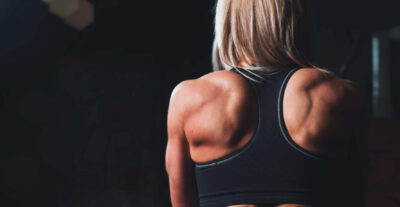 At a conference in 2012, Luc van Loon was presenting some exciting data from a newly published study. After a heroic research effort that took 2.5 years and 500,000 euros, he and his colleagues had managed to shepherd a large group of frail, elderly subjects through a six-month strength-training program. Those who had taken a daily protein supplement managed to pack on an impressive 2.9 pounds of new muscle. Success! Old people could be strong!
At a conference in 2012, Luc van Loon was presenting some exciting data from a newly published study. After a heroic research effort that took 2.5 years and 500,000 euros, he and his colleagues had managed to shepherd a large group of frail, elderly subjects through a six-month strength-training program. Those who had taken a daily protein supplement managed to pack on an impressive 2.9 pounds of new muscle. Success! Old people could be strong!
But van Loon, an “extraordinary professor” (his actual title) of exercise physiology and nutrition at Maastricht University in the Netherlands, wasn’t celebrating. On his phone was a photo one of his students had just sent him of a large plate stacked high with bulging cubes of raw beef. In total, there were 3.1 pounds of beef—a graphic visualization of the muscle lost in just one week by subjects of a bed-rest study the student had just completed.
“I usually put this in more obscene language,” van Loon says, “but you can mess up a lot more in one week than you can improve in six months of training.”
Over the past decade and a half, van Loon has emerged as one of the world’s most rigorous and innovative researchers on the intricacies of how we build muscle. But he has now come to believe that, from a health perspective, how we lose muscle is at least as important. At a conference in Rhode Island in 2017, hosted by the New England chapter of the American College of Sports Medicine, van Loon laid out the key lessons he and other researchers in the field have gleaned. For anyone who seeks to push their limits, or who plans to get old, here are the highlights.
You Are What You Just Ate
If you really want to understand how protein contributes to new muscle, you need to be able to follow the individual components—amino acids—on their journey inside your body. Starting in 2009, van Loon and his colleagues developed a technique that involved infusing 40,000 euros’ worth of amino acids, specially “labeled” using a rare and trackable isotope, into a cow. Then they milked the cow and, 24 hours later, slaughtered it. The result: milk and beef that can be tracked with painstaking precision as it progresses from a person’s mouth to their biceps by taking frequent samples of blood and biopsied muscle tissue in the hours after a meal.
In one of the resulting studies, the researchers found that substantial amounts of the “glowing cow” protein was incorporated into muscles within just two hours of ingesting it. As the study’s title proclaims, you are, quite literally, what you just ate. Just over 50 percent of the protein made it into the subjects’ circulation within five hours, with the rest presumably taken up by tissues in the gut or not absorbed. During the same period, 11 percent of the ingested protein was incorporated into new muscle.
Overall, van Loon points out, we break down and rebuild 1 to 2 percent of our muscle each day, meaning that you completely rebuild yourself every two to three months. This is a message, van Loon hopes, that might persuade people to think a little more carefully about what they put in their mouths.
If You Exercise First, You’re More of What You Just Ate
 We often think of amino acids as the “building blocks” of muscle. That’s true, but the amino acids derived from protein actually play a dual role in muscle growth: In addition to being a source of raw materials, protein acts as a signaling molecule, triggering the growth of new muscle. One amino acid in particular, leucine, seems to be the most potent anabolic signaler, but you need all the amino acids together to effectively build muscle.
We often think of amino acids as the “building blocks” of muscle. That’s true, but the amino acids derived from protein actually play a dual role in muscle growth: In addition to being a source of raw materials, protein acts as a signaling molecule, triggering the growth of new muscle. One amino acid in particular, leucine, seems to be the most potent anabolic signaler, but you need all the amino acids together to effectively build muscle.
There are a bunch of subtleties here, like the optimal dose of protein. In healthy adults, a dose of about 0.25 grams of protein per kilogram of body weight seems to max out the protein synthesis signal from a given meal. That’s about 20 grams of protein if you weigh 175 pounds. So it makes sense to hit that target three or four or even five times a day.
That’s why van Loon and his team decided to experiment with a pre-bedtime dose of protein to see if they could boost muscle synthesis as you sleep. Their initial proof-of-principle study involved snaking a tube down the nose and into the stomachs of their subjects and flushing in 40 grams of protein while they slept. It worked—and van Loon, to his bemusement, soon started getting calls from sports coaches asking where they could get nasogastric tubes. (You can just eat the protein before you go to sleep, he explained to them.)
But the best way to augment protein’s muscle-signaling capacity is simple: Exercise before you eat, and your muscles become more sensitive to protein’s signals. “You can’t study food without exercise, and you can’t study exercise without food,” van Loon says. “There’s a synergy between them.”
If You’re Inactive, You’re Less of What You Just Ate
Unfortunately, there are also factors that make your muscles less sensitive to protein signaling. Getting older is one of them, which is why older adults seem to need a larger dose of 0.4 grams of protein per kilogram of body weight, rather than 0.25, to max out their rates of protein synthesis.
But is it really age that causes this “anabolic resistance”? Or is it simply a consequence of our unfortunate habit of becoming less physically active as we age? Van Loon’s bed-rest study piqued his interest in the rapid and devastating effects of inactivity, particularly in hospital settings, where people are often confined to bed for five to seven days. According to the “catabolic crisis” model of aging, we don’t lose our muscle mass at a steady and predictable rate. Instead, much of the loss takes place during short periods of time—a week in bed after a fall or a knee replacement, say—during which we lose massive amounts of muscle that we never fully get back.
Van Loon advocates some simple fixes—like never, ever feed someone in a hospital bed unless it’s absolutely necessary. Make them get up, and ideally make them shuffle down the hallway to get food. Same for watching TV. Even this tiny amount of muscle contraction, he says, will enhance muscle synthesis when the patient eats. Similarly, since you don’t eat as much when you’re in bed, the proportion of protein in the meal should be higher to ensure sufficient muscle synthesis signals.
Of course, some people really can’t get out of bed—so van Loon did some wild-sounding experiments. In one, he immobilized one leg of his volunteers with a cast for five days, then drilled a hole in the cast to apply neuromuscular electrical stimulation (NMES) to half of those volunteers. The immobilization caused a 3.5 percent reduction in the cross-sectional area of the quadriceps; twice-daily electrical stimulation prevented this loss.
In another study, van Loon tried the technique on actual comatose patients in the intensive care unit of a hospital. Biopsies showed that these patients were seeing a 20 to 30 percent reduction in the size of their muscle fibers during their hospital stays. “Basically the people are melting in front of your face,” he says. So van Loon zapped one leg but not the other with NMES twice a day for a week—and again warded off atrophy. The approach is nowhere near as good as even the most basic exercise, he says, but it appears to be better than nothing.
Chew Your Food
Okay, this one doesn’t really rank up there as an Eternal Law of Muscle. But it’s cool. In one of the “glowing cow” studies, van Loon and his colleagues compared ground beef to steak. The ground beef was absorbed more quickly, with 61 percent of the tracer amino acid in the ground beef appearing in the bloodstream within six hours versus just 49 percent for the steak.
How significant this is remains a bit unclear (rates of muscle protein synthesis weren’t significantly different in the study), but it’s worth noting—particularly because we tend to get less good at chewing our food as we get older. In fact, van Loon says, studies in the 1960s found that people who retained more of their own teeth tended to have more muscle. Bizarrely, body position also matters: When you eat lying down, you slow down protein digestion and likely reduce the synthesis of new muscle protein.
So, as van Loon told the conference in Rhode Island, the overall body of research boils down to one simple message: Your mum was right. Eat three protein-rich meals a day, get plenty of exercise, and—I’m not going to warn you again!—sit up straight and chew your damn food. With your mouth closed.
Original article here



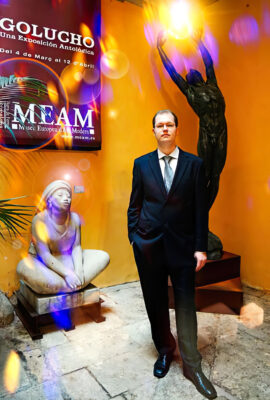 I’m a self-taught artist from Finland, working in many different traditional mediums and digital art. I especially like to create digital art that feels as if it’s made in a traditional medium.
I’m a self-taught artist from Finland, working in many different traditional mediums and digital art. I especially like to create digital art that feels as if it’s made in a traditional medium.





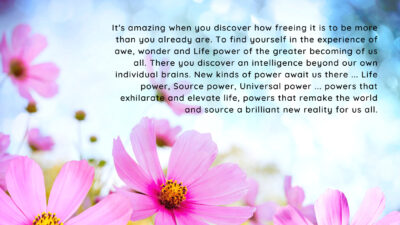
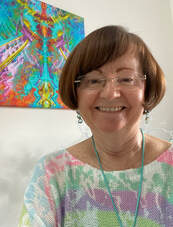
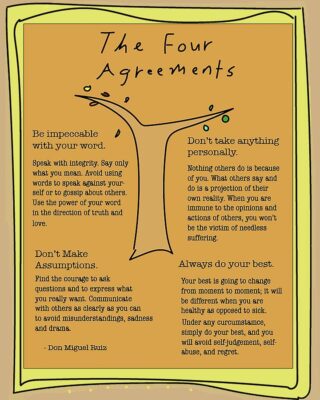 Spiritual teacher Don Miguel Ruiz brought The Four Agreements into Western awareness. A new thought author versed in ancestral knowledge, Ruiz says the agreements come from Toltec wisdom. The Toltecs were a pre-Hispanic culture living in central Mexico, talented artists and builders as well as warriors.
Spiritual teacher Don Miguel Ruiz brought The Four Agreements into Western awareness. A new thought author versed in ancestral knowledge, Ruiz says the agreements come from Toltec wisdom. The Toltecs were a pre-Hispanic culture living in central Mexico, talented artists and builders as well as warriors.